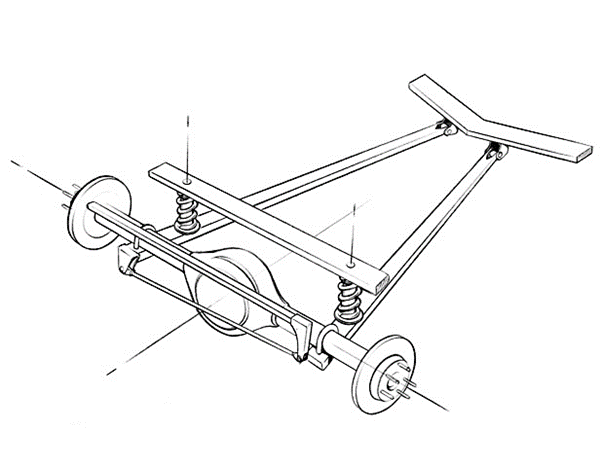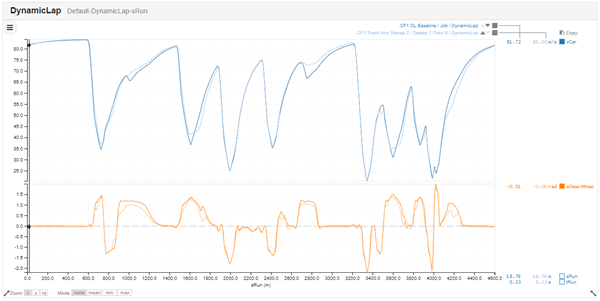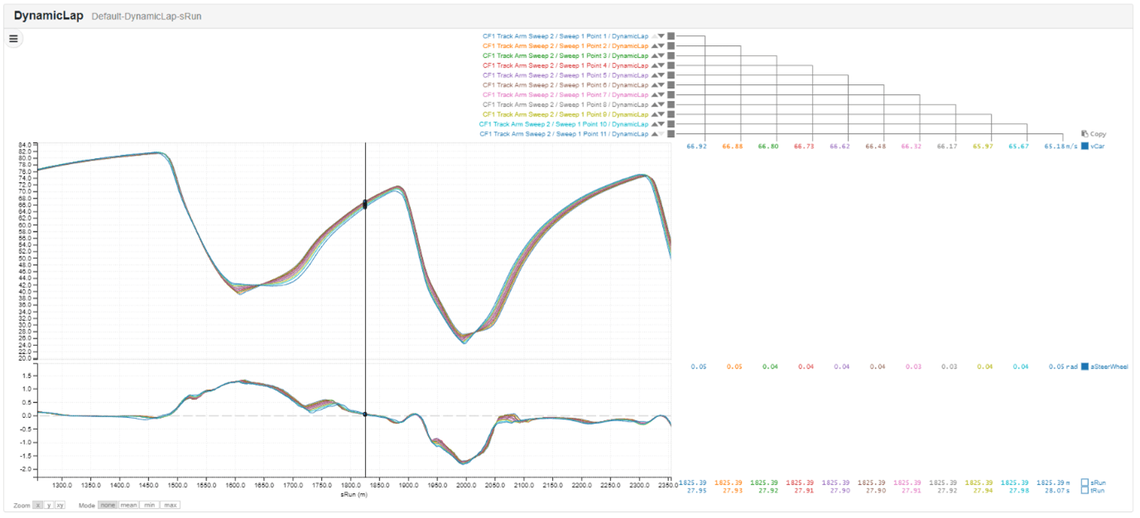A Farewell To Truck Arms
OCTOBER 6, 2021
Written by Dr. Oliver Watkins
On November 7th 2021, NASCAR will race its Generation 6 car for the last time, and in so doing say goodbye to one of the most unusual suspension geometries in modern motorsport. Here at Canopy, we have mixed feelings about this; coming from the steady and straightforward world of F1 almost everything about the truck-arm rear suspension seems crazy, but on the other hand it definitely has character.
So what are NASCAR doing now, and what are they going to be doing in 2022?
The Gen-6 rear suspension uses a solid axle, which rigidly connects the rear wheels together. The solid axle is then mounted on a frame which connects to the chassis via a gimbal joint some distance in front of the wheels. The whole frame can then roll, pitch and yaw relative to the chassis. The aim of the suspension is to control these three degrees of freedom of movement, so we need three further connections between the chassis and the suspension frame. These come in the form of two spring/damper suspension struts, and finally the “Panhard Arm” (or track bar, or track rod).

The layout of the truck-arm (or trailing arm) suspension. That axle looks, and is, very solid!
Having been brought up on a diet of independent suspensions this looks pretty unusual, to say the least. We wouldn’t claim to be experts in exploiting this type of suspension, but that won’t stop us playing our favourite game at this point: asking what would happen if an F1 car had this sort of suspension. We’ve setup a car with:
A truck arm suspension where 200kg of the 700kg vehicle mass is in the suspension assembly.
Spring rates matched to our baseline F1 car, so that the ride height vs. speed characteristics match.
We can then give it a lap of Barcelona and see how it performs against a conventional suspension. This is completely absurd; this type of geometry is usually heavily optimized to run on an oval track and make turning left as painless as possible. In fact, one of the neat characteristics of the Panhard Arm is that if you lengthen it, it pushes the whole rear suspension assembly sideways thus causing the car to turn left if without steering. Therefore, to go in a straight line the driver must turn to the right, effectively causing the car to crab along the straights. However, when the infamous left turns arrive, the bodywork and front wheels can all be aligned with the oncoming air flow, and around the car will go. This offers significant aero benefits.

The comparison here is very interesting. Through turn 4, a medium speed right hander, the apex speed outperforms the F1 car but then we lose out horribly under traction. This is hardly surprising; the mechanical balance of the car has gone a long way rearward. In order to match the heave stiffness we’ve made a terrible mess of the roll stiffness, with disastrous consequences. For turn 5, however, a sharp left hander, everything is just great; this car really wants to turn left!
We can now have some fun changing the length of the Panhard Arm. As we sweep this from 50mm longer than normal to 50mm shorter than normal, the vehicle dynamics get very challenging. As we might expect, turning left gets a lot easier and turning right a lot harder. [1]

More of turns 4 and 5 at Barcelona. As we change the length of the Panhard Arm the left/right bias gets worse and worse. Let’s stick to ovals!
This illustration probably helps to show why asymmetry in F1 has never really taken off. A few tracks offer limited potential for asymmetric setup, but balanced left/right performance usually means that any asymmetry is very limited. In NASCAR, in fact in all oval racing series we serve, quite the reverse is true; introducing a little bit of asymmetry leads down a deep rabbit hole of asymmetric setup. Inflation pressures, spring stiffnesses and shims, suspension tweaks and even tyre compounds vary between left and right. This is what racing in a Formula series is all about; taking a set of tightly constrained technical regs and working your way through them to maximise performance.
We’ve long speculated that F1 is a racket run by engineers for the benefit of engineers. Every few years everyone starts to get a bit bored, at which point there’s a big rules rewrite and everyone has something fun to get their teeth into again. And this, it seems, is what’s happening in NASCAR; out with the truck arm and in with a conventional suspension. We’re sad to see the disappearance of this most idiosyncratic suspension geometry, but from a commercial perspective we’re quite pleased to see the new regs lining up with our core capability in which we have shown our strength in a huge variety of race series.
Canopy already serves customers operating in a huge variety of formulae around the world; Formula 1, Formula E, Indy Car, WEC, Formula 2, GT3, etc. If you are in a NASCAR team getting to grips with the challenges thrown up by the 2022 NASCAR regulations, and you’d like to make your life easier with the world’s best motorsport simulation software, get in touch via hello@canopysimulations.com.
[1] race engineers familiar with this type of suspension are probably grinding their teeth now; I’m sure that a 50mm adjustment is probably about an order of magnitude larger than typical.